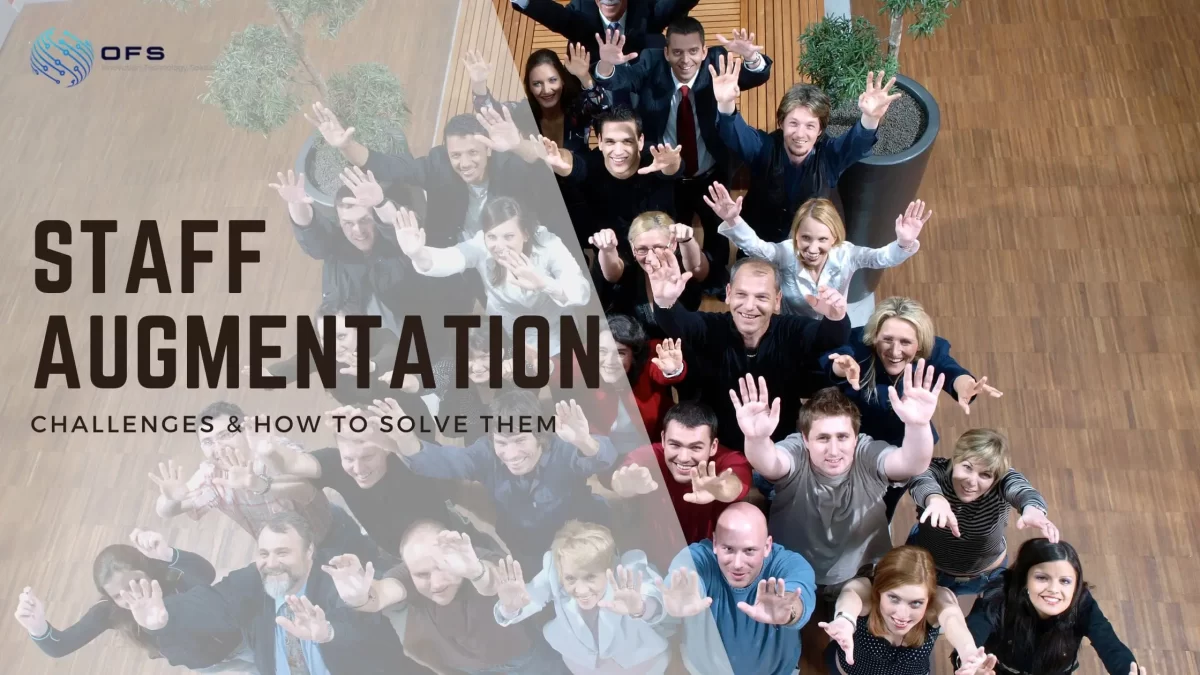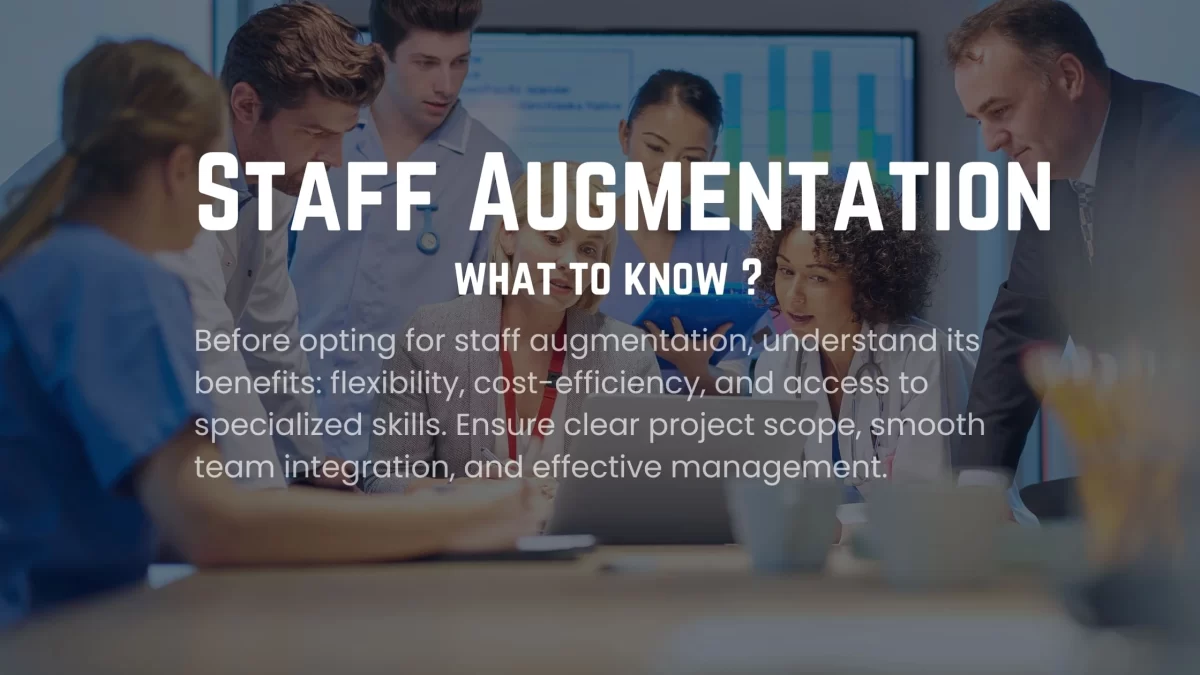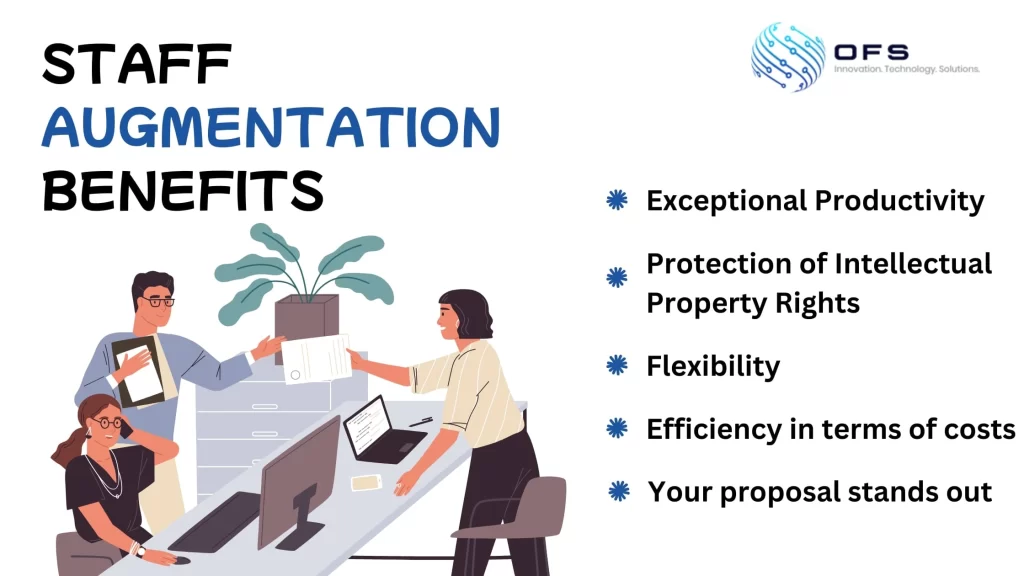Organizations find staff augmentation a strategic solution to fulfill their project requirements and talent needs. After all, this hiring model allows them to utilize temporary or full-time external workers to achieve their business objectives and handle fluctuating workloads. This eliminates traditional hiring costs and helps with productivity.
Opting for staff augmentation has become a common practice among tech companies.
According to a report by Grand View Research, the global IT staff augmentation market can reach a substantial USD 147.2 billion by 2028, expanding at a steady CAGR of 7.6% from 2021. This is due to the ever-increasing adoption of transformative technologies such as cloud computing, big data, artificial intelligence, and the Internet of Things.
However, this model is not without challenges. Below, we explore the most common issues in technical staff augmentation and provide actionable solutions to help businesses overcome them.
1. Finding the Right Talent
The Challenge
Finding the right talent has always been a challenge for tech companies. The tech field is vast, encompassing a variety of positions or roles to fill, such as data scientists, developers, cybersecurity experts, and network engineers. No wonder many tech companies struggle to find professionals with the required expertise or updated skills in the latest technologies.
The Solution
· Partner with reliable staffing agencies
· Create a pool of freelancers over Upwork or LinkedIn
· Create clear job descriptions regarding skills, experience, and responsibilities expected for the role.
· Develop long-term relationships with staffing agencies and platforms to ensure a steady flow of reliable candidates with proven skills.
2. Onboarding and Integration Difficulties
The Challenge
It is quite tricky to integrate external staff with your in-house team. Well, we all have been there. The new talent may take time to fit into your company’s culture, processes, or project details. This unfamiliarity can lead to communication gaps, project delays, and inefficient workflows.
The Solution
· When introducing a new tech staff, allocate time for an introduction to the company culture, key stakeholders, and ongoing projects.
· Ask them what issues they are facing and address them.
3. Communication Barriers
The Challenge
Miscommunication is also a pressing issue that comes with technical staff augmentation, especially if the talent belongs to different locations or time zones. Thanks to varying terminologies, vague instructions, or various communication styles.
These concerns can cause misaligned expectations and project setbacks.
The Solution
· Create clear communication channels and protocols.
· Use project management tools like Slack, Trello, or Microsoft Teams.
· Set up daily or weekly status meetings, where augmented staff can discuss progress, raise concerns, and align tasks with the rest of the team.
· Conducting regular feedback sessions is also beneficial to address communication issues proactively.
4. Maintaining Data Security
The Challenge
An external talent is likely to have access to your confidential data such as passwords and sensitive information. Not having proper measures in place can lead to the risk of data breaches, intellectual property theft, and misuse of your data.
The Solution
· Incorporate strict access controls and only grant the necessary permissions to external talent.
· Using non-disclosure agreements (NDAs) and confidentiality contracts can provide legal protection.
· Using secure collaboration platforms, setting up two-factor authentication, and training staff on cybersecurity measures can further mitigate risks.
5. Quality Assurance
The Challenge
Will your external staff be up to mark?
That’s one of the significant concerns to address with tech staff augmentation. Given that they are not permanent, there can be discrepancies in the quality of work delivered, causing issues like
Since augmented staff are not permanent, there can be discrepancies in the quality of work delivered, leading to issues like bugs, system inefficiencies, or poor code quality.
The Solution
· Set clear quality standards and conduct regular performance evaluations.
· Implementing code review processes, automated testing, and maintaining comprehensive documentation can help uphold quality.
· Assign mentors or technical leads to oversee augmented staff to ensure that they follow best practices and adhere to quality guidelines.
6. Cultural Differences and Team Cohesion
The Challenge
External tech staff often come from diverse cultural backgrounds. Diversity often comes with the challenge of cultural differences, impacting collaboration, communication styles, and overall team dynamics.
The Solution
· Creating a welcoming and inclusive environment is key to overcoming cultural differences.
· Encourage open dialogue about work styles, cultural expectations, and communication preferences.
· Conducting team-building activities, fostering a culture of respect and inclusion, and offering sensitivity training can help bridge cultural gaps and build a more cohesive team.
7. Lack of Long-Term Commitment
The Challenge
Generally, augmented staff are hired for short-term projects. Therefore, they may not have a sense of long-term commitment to the company’s objectives or values.
This can impact their motivation, productivity, and dedication to the work.
The Solution
· Regularly update them on company goals and project progress to build a sense of purpose.
· Recognize and reward their contributions, and provide opportunities for them to share their input and ideas.
8. Cost Management Issues
The Challenge
For some organizations, keeping track of costs associated with staff augmentation can be complicated. They face issues like unexpected additional costs, overlapping roles, or budget overruns, which can undermine the financial benefits of staff augmentation.
The Solution
· Determine the project’s scope and the required roles to avoid redundant positions.
· Set clear project milestones and deliverables.
· Review contracts thoroughly to understand all cost implications.
· Monitor the progress regularly to identify and resolve any budget discrepancies early.
9. Dependency on External Talent
The Challenge
Sure. External talent can help you with internal talent shortages and associated productivity issues. But it may be easy to rely overly on them. This over-reliance can lead to issues, especially when the company becomes dependent on temporary professionals for critical projects. If the augmented staff leaves unexpectedly, it can disrupt the workflow and impact project timelines.
The Solution
· Ensure that critical knowledge and project details are regularly documented and shared with internal staff.
· Encourage collaboration between augmented and in-house teams to foster knowledge sharing.
· Creating contingency plans in place can also mitigate the impact of sudden departures.
10. Adapting to Changing Needs
The Challenge
The technical requirements associated with your project are likely to change over time. As a result, companies are required to scale up or down with their augmented staff. Without flexibility, companies might face either a shortage or a surplus of talent, affecting project outcomes.
The Solution
· Partner with a flexible staffing provider.
· Build a talent pipeline in place to meet changing needs.
· Keep track of project requirements and update staffing plans accordingly.
Over to You…
Having proactive planning, clear communication, and security measures in place can help deal with tech staff augmentation issues. It will help you make the most of your external resources and overcome potential roadblocks.
At OFS, we are familiar with such issues and provide tailored solutions geared towards your specific business needs and internal working. We not only give you access to top tech talents but also guide you over the existing and potential changes or concerns.
Get in touch now to see how tech staff augmentation can benefit your bottom line.










